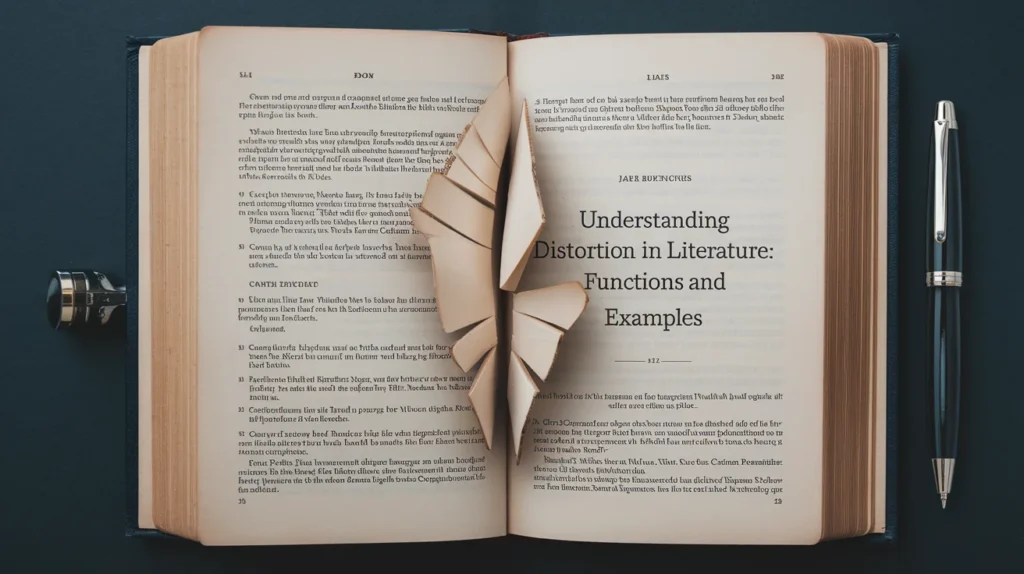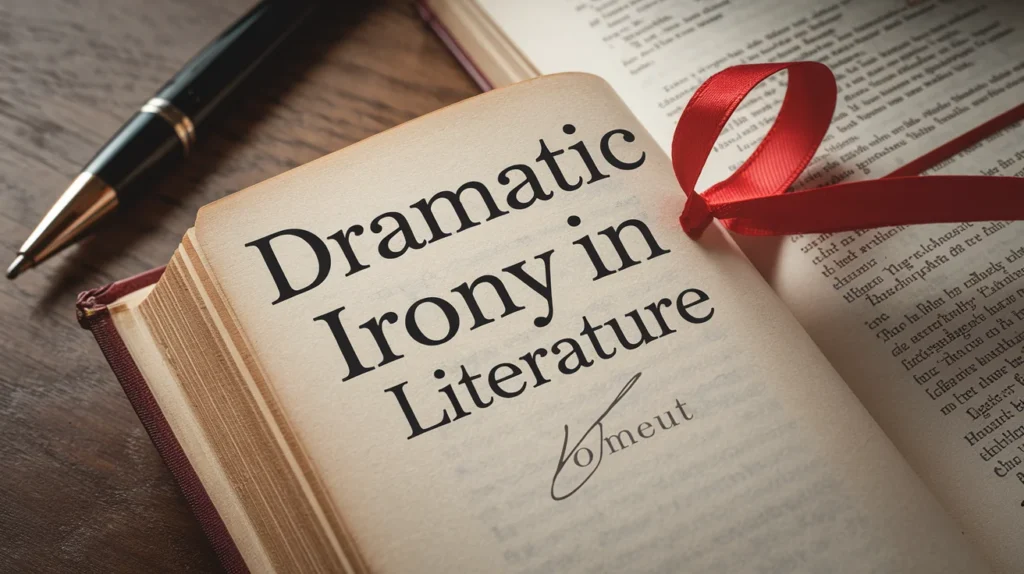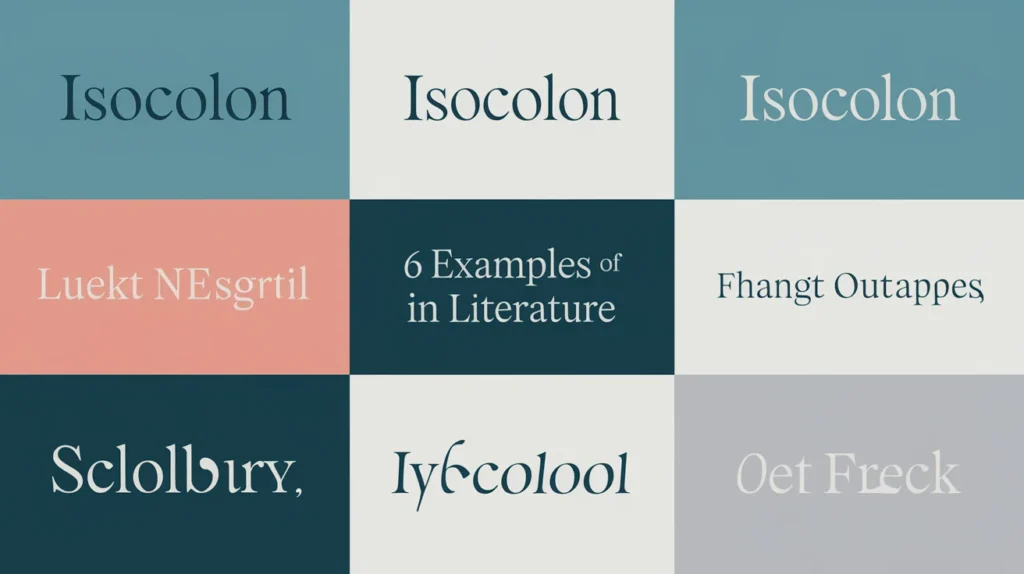Distortion in literature is more than just a literary device; it’s a powerful technique used by writers to evoke strong emotional responses, provoke thought, and challenge readers’ perceptions. Whether it’s through unreliable narrators, distorted time frames, or altered realities, distortion invites readers to explore deeper truths about the human condition. In this article, we’ll dive into the functions of distortion in literature, showcasing various examples from well-known works and exploring why writers use this technique. By the end, you’ll have a solid understanding of how distortion shapes the way we experience stories and their themes.
What is Distortion in Literature?
At its core, distortion in literature refers to the manipulation of time, reality, or perspective to create a sense of disorientation or unpredictability. Writers intentionally stretch, alter, or blur elements of a story to make the ordinary seem strange or the imaginary seem real. Distortion challenges the reader’s sense of certainty, forcing them to question what they think they know.
In simpler terms, distortion is a technique that makes readers look beyond the surface of a story to understand its deeper layers—whether through unreliable narrators, non-linear timelines, or the blending of fantasy and reality.
The Role of Perception and Subjectivity
In literature, distortion is often tied to subjectivity—the idea that people’s perspectives shape their understanding of the world. A distorted narrative could reflect a character’s personal bias, emotional state, or mental health issues, making it hard for readers to determine what is “true.” Unreliable narrators are a prime example of this, as they present a skewed version of reality that readers must sift through.
For instance, in F. Scott Fitzgerald’s The Great Gatsby, Nick Carraway, the narrator, distorts the events around him based on his own feelings and experiences, leaving readers to question what is real and what is distorted by his perceptions.
Relation to Literary Movements
Distortion is not only a stylistic choice but also a hallmark of various literary movements. Modernism, for example, frequently employed distortion to reflect the fragmented, chaotic nature of post-war society. Writers like James Joyce and Virginia Woolf used distortion to explore the inner workings of the mind and break away from traditional narrative forms. Similarly, postmodernism often uses distortion to blur the boundaries between fiction and reality, further challenging readers’ expectations and perceptions.
Functions of Distortion in Literature
Distortion is more than just a technique for creating confusion or complexity. It serves multiple functions that help deepen the narrative and enrich the reader’s experience. Let’s take a closer look at some of the key functions of distortion in literature.
1. Creating Unreliable Narratives
One of the most powerful uses of distortion is in crafting unreliable narrators. These narrators intentionally or unintentionally distort the story by presenting it from a biased, subjective, or incomplete perspective. The goal is to challenge the reader’s trust in the storyteller and make them critically engage with the narrative.
- Example: In The Great Gatsby, Nick Carraway’s narrative is full of distortion because he is emotionally involved with the characters, particularly Gatsby. As a result, his perception of events is clouded, and readers must question the accuracy of his account.
2. Exploring Psychological Depth
Distortion also allows writers to explore the psychological states of their characters. By distorting time, reality, or other aspects of the story, writers can mirror the characters’ emotional turmoil or mental instability. This makes the character’s internal struggles more visceral and real.
- Example: In Sylvia Plath’s poem Lady Lazarus, the speaker’s perception of life and death is distorted as she describes multiple suicide attempts and her return to life. This distortion reflects the speaker’s mental anguish and internal conflict.
3. Enhancing Themes and Symbolism
Distortion can also be used to strengthen the themes and symbolism of a story. By altering reality, writers can draw attention to larger societal issues, such as the fragility of identity, the breakdown of social structures, or the consequences of historical trauma.
- Example: In Gabriel García Márquez’s One Hundred Years of Solitude, the distortion of reality through magical realism symbolizes the cyclical nature of history and the inevitability of repetition. The blending of the real and the fantastic creates a powerful narrative that mirrors the struggles of Latin American history.
4. Challenging the Reader’s Expectations
Writers use distortion to break away from conventional storytelling and push readers out of their comfort zones. By manipulating the structure of a narrative, writers keep readers on their toes, constantly questioning what is real and what is imagined.
- Example: In Oryx and Crake by Margaret Atwood, the story’s distorted narrative blurs the lines between dystopian fiction and present-day reality. This use of distortion forces readers to consider the ethical implications of genetic engineering and its potential consequences on humanity.
5. Manipulating Time and Space
Distortion often involves manipulating time and space, creating a sense of disorientation or confusion. This technique helps highlight the subjective nature of time and memory, allowing readers to experience the story through the eyes of characters who perceive time differently.
- Example: In Toni Morrison’s Beloved, the non-linear structure of the narrative distorts time, reflecting the fragmented and painful memories of slavery. The reader is pulled in and out of past and present events, mimicking the characters’ inability to escape their traumatic history.
Examples of Distortion in Literature
Now that we understand the functions of distortion, let’s dive into some real-world examples from famous works of literature. These examples demonstrate how writers have used distortion to create memorable, thought-provoking narratives.
1. “The Great Gatsby” by F. Scott Fitzgerald
- Distortion of Time and Reality: Nick Carraway’s narration distorts the events surrounding Gatsby’s life and death, clouded by his emotional involvement and personal bias.
- Effect on Themes: The distortion helps explore themes like the American Dream, illusion vs. reality, and the transitory nature of wealth and status.
2. “Beloved” by Toni Morrison
- Memory and Trauma Distortion: Sethe’s fragmented memories and the spectral presence of Beloved create a distorted timeline, reflecting the deep scars of slavery.
- Impact on Characters: The distortions in the narrative mirror the characters’ psychological wounds, highlighting their inability to move forward from their traumatic past.
3. “One Hundred Years of Solitude” by Gabriel García Márquez
- Magical Realism as Distortion: The events of the novel mix magical and realistic elements, distorting the line between the real and the fantastical.
- Symbolism of History: The use of distortion highlights the cyclical nature of history, emphasizing themes of inevitability and repetition.
4. “Oryx and Crake” by Margaret Atwood
- Science Fiction and Reality Distortion: The novel’s futuristic setting distorts the reader’s perception of the world, blurring the line between current environmental issues and speculative fiction.
- Function of Distortion: The distortion forces readers to critically consider the consequences of genetic manipulation and the ethical boundaries of scientific advancements.
5. “Lady Lazarus” by Sylvia Plath
- Psychological Distortion: The poem distorts the speaker’s view of life and death, exploring themes of survival, identity, and the search for control over one’s own fate.
- Self-Perception: The distortion of reality reflects the speaker’s struggle to reconcile her inner turmoil with the world around her.
6. “Lord of the Flies” by William Golding
- Distorted Civilization: The breakdown of societal norms on the island distorts the boys’ behavior, revealing a more primal and violent nature beneath the surface of civilization.
- Island as a Setting: The isolated environment distorts the boys’ perception of morality and order, ultimately leading to chaos.
7. “The Metamorphosis” by Franz Kafka
- Physical and Psychological Distortion: Gregor Samsa’s transformation into a bug distorts his physical appearance, while his alienation from his family distorts his sense of identity.
- Alienation and Identity: The distortion reflects Gregor’s internal disconnection from society, family, and his own self-worth.
Why Writers Use Distortion
Writers use distortion not just as a stylistic choice but as a tool for exploring complex themes and engaging the reader on a deeper level. Let’s explore why distortion is such a powerful literary technique.
1. To Reflect the Complexity of Human Experience
Distortion allows writers to explore the nuances of human emotions and the complexity of individual experience. By manipulating reality, writers can reflect the multifaceted nature of human existence and the inner struggles that define it.
2. To Challenge the Reader’s Perspective
Distortion invites readers to challenge their assumptions and examine the world through different lenses. It asks readers to question what is real, what is truth, and how much of what we perceive is influenced by our own biases.
3. To Enhance Thematic Exploration
Distortion can be used to highlight specific themes, such as alienation, identity, or societal breakdown. It helps deepen the exploration of these issues, making them more tangible and impactful for the reader.
4. To Express Surreal or Psychological Realities
Distortion is a powerful way to express psychological realities, especially when characters’ minds are fractured or at odds with the world around them. Writers use it to depict surreal experiences that reflect the confusion and chaos often present in the human mind.
5. To Critique Society or Human Nature
Writers may use distortion to critique societal norms or examine human nature in ways that a straightforward narrative could not. By distorting reality, they can expose the flaws, contradictions, and dangers inherent in human society.
Conclusion
Distortion in literature is a versatile and impactful technique that allows writers to challenge readers, deepen character exploration, and tackle complex themes. Whether it’s through unreliable narratives, psychological depth, or the blending of reality and fantasy, distortion invites readers into a world where nothing is as it seems. It forces us to confront our assumptions, question the nature of truth, and explore the deeper meanings hidden within a story.
As you explore literature, keep an eye out for distortion—it’s one of the most powerful tools writers use to bring their stories to life.
Frequently Asked Questions
Q1: What is the main purpose of distortion in literature?
A1: The main purpose of distortion is to challenge readers’ perceptions of reality, explore complex themes, and deepen character development by presenting a skewed or altered version of events.
Q2: Can you give an example of distortion in modern literature?
A2: One example is Margaret Atwood’s “Oryx and Crake”, where the narrative distorts reality by blending a futuristic dystopian world with present-day issues, questioning the ethics of scientific advancements.
Q3: How does distortion affect the themes of a story?
A3: Distortion can enhance themes like identity, alienation, and morality by creating an unreliable or fragmented reality that forces readers to reconsider what they thought they knew.
Q4: Why do writers choose to distort time and space in their narratives?
A4: Writers distort time and space to reflect the complexity of memory, psychological states, and the subjectivity of human experience, allowing for a deeper exploration of characters’ inner worlds.


